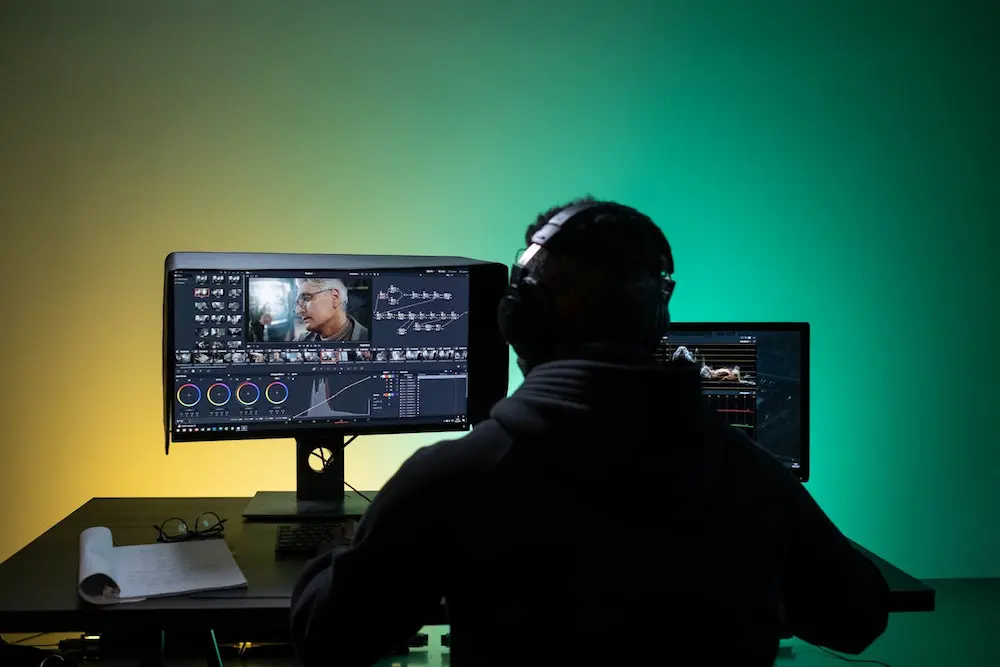In today’s era, the film and video industry continues to evolve by embracing technological advancements. One notable progress in recent times is the integration of Artificial Intelligence (AI) into video editing processes. This blend of creativity and technology has opened up a realm of possibilities, transforming how videos are crafted and captivating audiences in various ways.
How AI Enhances Video Editing
Through algorithms and machine learning techniques, AI-powered video editing significantly reduces production timelines while elevating the overall quality of the end product. By analyzing datasets, the best AI video editor tools can learn from patterns to make informed decisions on editing videos effectively. For example, algorithms designed for scene recognition can identify elements within a video, like faces or landscapes. This capability allows editors to swiftly organize footage based on specific criteria, saving time during the selection phase and enabling them to concentrate on more artistic aspects.
AI algorithms also excel at automating tasks such as color correction and audio balancing. By studying videos, AI can recognize particular styles and aesthetic preferences that align with the editor’s vision. This not only speeds up production processes but also ensures consistency across different scenes. Additionally, video editing software powered by AI can automatically create subtitles by transcribing spoken words in real-time, which is extremely valuable for accessibility purposes.
Benefits of Utilizing AI in Video Editing
Incorporating AI into video editing provides numerous advantages that enhance the efficiency and quality of the entire process:
- Streamlining Workflow: Traditional video editing requires a lot of time spent reviewing footage. With an AI algorithm capable of identifying relevant content far quicker than a human, editors can achieve the same results in a fraction of the time.
- Enhanced Precision: Tasks like color grading or noise reduction often lead to errors due to fatigue or distractions. Conversely, an AI algorithm can consistently and accurately apply corrections, thereby enhancing the quality of the product.
- Boosting Creativity: By handling laborious tasks, AI allows editors more time and mental capacity to concentrate on the subjective aspects of video editing. This freedom fosters creativity and leads to an original outcome.
- Uniformity Across Projects: Given enough data, AI algorithms can grasp an editor’s preferences. Consequently, automated editing interventions tend to maintain consistency across projects by replicating techniques used in successful edits.
Challenges Faced by AI in Video Editing
While AI offers a range of benefits, it’s also important to recognize its limitations:
- Understanding Context: AI algorithms struggle with grasping context the way humans do and may find it challenging to make nuanced decisions that involve deep cultural or social understanding.
- Creative Insight: Although machine learning can identify patterns and imitate editing styles, it lacks the creative insight that human editors possess. Humans excel at making judgment calls based on emotions or personal storytelling preferences.
- Adjusting to New Formats: While AI algorithms perform well once trained on existing data, they often face difficulties adapting to emerging video formats or unconventional editing methods.
Ethical Concerns in AI Video Editing
As the use of AI in video editing expands, addressing the ethical considerations associated with this technology is crucial:
- Privacy Issues: AI algorithms rely on large datasets for training, which may contain sensitive data or copyrighted materials. Implementing safeguards and obtaining consent for data usage is essential to prevent privacy violations.
- Equity: The effectiveness of AI algorithms is heavily influenced by the quality of the training data they receive. When there are biases in the training dataset, like not representing specific groups adequately or distorting social norms, it can result in biased decisions during the editing phase. This can perpetuate stereotypes and lead to exclusionary practices.
- Ownership: There are numerous legal and ethical considerations surrounding who possesses the rights to an AI-edited video. This could be the editor, the organization utilizing the AI tool, or possibly even the algorithm itself. These factors could influence copyright laws and regulations.
Conclusion
Achieving a perfect blend of art and science is essential for video editing. AI video editing is revolutionizing the film and video industry rapidly with its advanced technology and features. Professionals can streamline their workflow, boost creativity, and produce high-quality videos efficiently by harnessing this cutting-edge tool. It’s important to acknowledge that while AI excels in several tasks and aids in editing processes, human creativity remains irreplaceable. The industry progresses through a blend of creative vision and technological precision—a relationship that characterizes contemporary video production.

